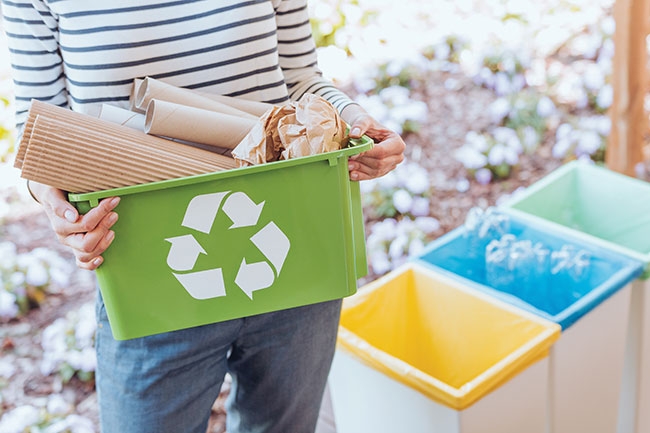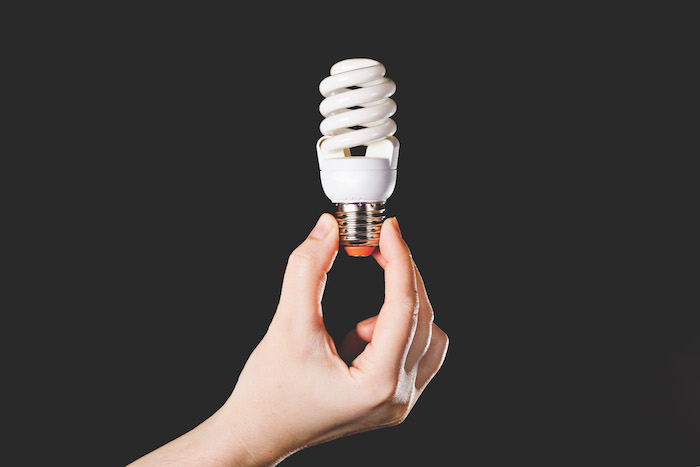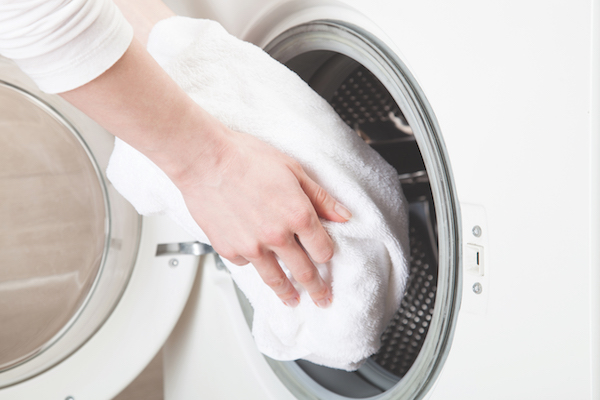
Features
Management
Operations
How to create an environmentally-friendly massage therapy practice
Massage therapists strive to help their clients live healthy lives. So it’s only natural that this concern extends to creating a healthy environment, too.
October 1, 2018 By Helen Lammers-Helps
 Massage therapists strive to help their clients live healthy lives.
Massage therapists strive to help their clients live healthy lives.Although massage therapy clinics are not big waste generators, there are still many simple things therapists can do to make their practices more eco-friendly, says Kent Waddington, co-founder and communications director at the Canadian Coalition for Green Health Care, an organization with the aim of supporting a more sustainable health delivery system.
Many of these are things people are already doing at home and that knowledge can be transferred to their offices, says Waddington. While there may be some financial investment involved in implementing these changes upfront, many of these environmentally friendly practices will actually save money in time, he adds.
Perform a waste audit
As a starting place, you can perform a waste audit to determine the types and amounts of waste produced in your office. For a day or two, collect all of the waste produced in your practice. This could include paper towels, food waste, disposable coffee cups, single-use water bottles, massage oil containers, etc.
Once you know the volumes of various waste products generated, you can look for ways to reduce, re-use and recycle. Waddington has several suggestions: use reusable water bottles and coffee cups; bring a waste-free lunch to work; don’t print emails unnecessarily (and put a message on the bottom of emails asking recipients to only print emails if needed); buy printer paper that uses post-consumer content; ensure recycling waste is properly sorted by placing bins in convenient locations and posting pictures on the bins of what can be recycled.
Considering the environmental impact of the products and services you purchase is another way to make your office greener. Implementing an “environmentally preferred purchasing policy” means purchases are evaluated for their environmental impact, says Waddington, who offers some suggestions for what to look for when making purchasing decisions: Is it possible to buy massage lotions in bulk or with reusable packaging to reduce waste? What are the distances travelled by products and are more local products available? Is it possible to bundle your orders with other massage therapists to reduce packaging and transportation impacts? Are more environmentally-friendly cleaning products available? [See the link under the “Resources” heading for a list of toxic chemicals to avoid.] (Getty Images)
(Getty Images)
Energy
By examining all of the ways in which your practice uses energy, you can find ways to reduce your energy use, shrink your carbon footprint, and save money. With the quantity of sheets that must be laundered in a typical massage therapy clinic, switching to energy efficient water heaters, clothes washers and clothes dryers can have a big impact. Looking for the Energy Star® logo (the internationally recognized and trusted mark of high efficiency) to ensure you are purchasing energy efficient appliances, says Waddington.
According to the Energy Star website, clothes washers that have earned the Energy Star logo use 25 per cent less energy and 33 per cent less water than standard models, while Energy Star clothes dryers use 20 per cent less energy than standard models.
Natural Resources Canada offers these tips for optimum clothes dryer operation and energy efficiency: To increase air flow clean out the lint trap after every load, clean out the dryer vents, and avoid overfilling. Avoid over-drying sheets by using the sensor setting or, if using the timer feature, experiment with the timing until you minimize the drying time needed.
Other ways to save energy include replacing light bulbs with more efficient LEDs, using energy efficient appliances in the kitchen, using motion sensors to turn off lights in rooms when not in use such as the washrooms, and lowering blinds on windows to keep out the heat. Switching to a green energy provider such as Bull Frog Power will also make your practice more sustainable.
 (Getty Images)
(Getty Images)
water, water everywhere
In addition to waste and energy, water use is the third audit you can perform on your practice in your quest to become more environmentally friendly. In addition to a water-efficient clothes washer, check the water use for other appliances used in your practice such as water softeners, and if you don’t already have one, consider installing a dual flush toilet, says Waddington.
If you share office space with other tenants, you can approach the others to work together. “Try to get something going with the whole office,” suggests Waddington. “You can do the research and share it.” Waddington also suggests creating a “green bulletin board” or newsletter to share information with other tenants and your clients.
Doing their part
Massage therapists across the country are quietly doing their part to minimize their impact on the environment. Stephanie Mosselman, a Kitchener, Ont.-based RMT, has been slowly making changes to make her practice greener. “I believe in doing my part and making small changes that hopefully join up with other people making small changes to effect a larger change,” she explains.
Mosselman’s office has substituted hand towels in place of paper in the washrooms and switched to castile or other eco-friendly hand soaps. Mosselman purchases her oils and lotions from a local company in recyclable four litre jugs that she picks up at the store to eliminate unnecessary packaging during shipping.
Glass bottles are washed, disinfected and reused to store lotions. “The glass bottles don’t break down the way plastic bottles do,” says Mosselman, who also uses a reusable glass drinking water bottle for herself.
For cleaning her massage therapy room and table, she makes her own cleaning spray with water, vinegar, and essential oils, and uses cloth instead of paper towels.
When it comes to laundry, RMTs are laundry experts, says Mosselman. She switched to cold water and eco-friendly detergents and uses dryer balls in the dryer.
Cutting down on the amount of paper used in her practice for record keeping is one area Mosselman still hopes to tackle. “Someday I hope to do all my intake forms, charting and record keeping in a paperless way,” she says.
For Sophi Robertson, learning that hundreds of thousands of disposable coffee cups are thrown away every day in Toronto got her thinking about how she could reduce waste. “It was like a switch,” says the Toronto-based RMT, who now strives for a zero-waste lifestyle at home and aims to reduce waste where she can in her massage practice.
When Robertson brings food in a reusable container for a waste-free lunch – she even brings her own container if she goes to a local restaurant for take-out. Although Robertson thinks she may have been the first person to ask for this option, the restaurant now gives a discount for supplying your own container, she says.
Other ways that Robertson reduces waste at the office include taking compostable and recyclable waste home from the office since these services are not available in her building, making her own “wet wipes” for cleaning by cutting up old T-shirts and a DIY cleaning solution, and emailing receipts unless a client requests a printed copy.
Take an audit of your practice today – you may be surprised where you can cut the waste out of your life.
Resources
- The Green Office Toolkit from the Canadian Coalition for Green Health Care is filled with practical and affordable ideas to make eco-friendly office improvements: greenhealthcare.ca/green-office-toolkit/
- You can find a list of toxic chemicals on the Environment Canada website at ec.gc.ca/toxiques-toxics/?lang=En&n=98E80CC6-1
- Check with your local utilities and municipalities for environmental incentives and programs.
- Learn more about Energy Star certified appliances at the Natural Resources Canada website: nrcan.gc.ca/energy/products/categories/appliances/13630
- To find rebates for purchasing Energy Star appliances, go to the searchable database at Natural Resources Canada: nrcan.gc.ca/energy/products/energystar/why-buy/14136
Helen Lammers-Helps has more than 20 years’ experience writing about diverse subjects including business, environment, sustainability, food, gardening, and agriculture for a variety of publications and websites. She is a member of the Professional Writers Association of Canada.
Print this page